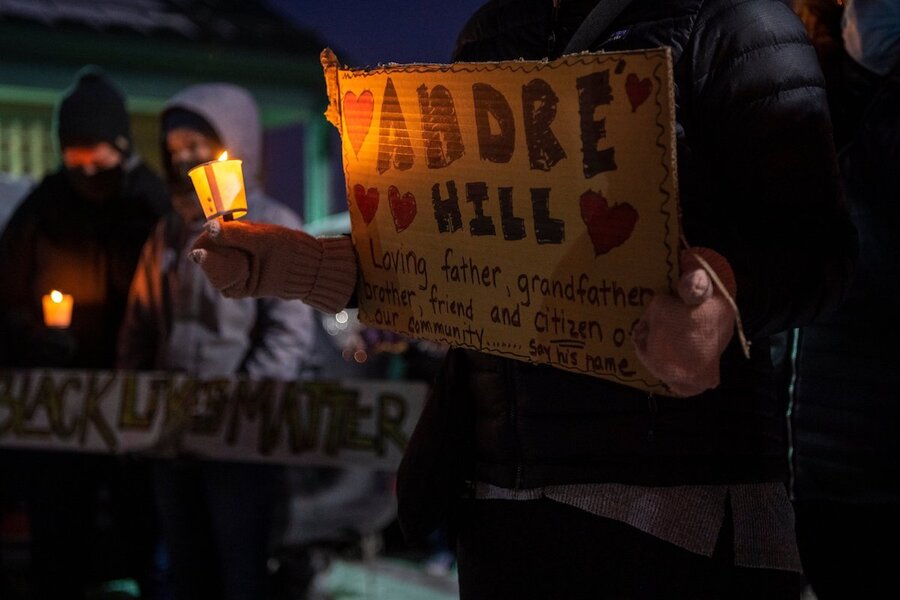Defund the police? Ohio city backtracks on diverting money.
Loading...
| Columbus, Ohio
Ohio’s capital and largest city is proceeding with its next class of police recruits following a debate over the future of law enforcement that would have put the class on hold.
A budget proposal released earlier this month by Columbus City Council took the $2.5 million required for the class and used it for other initiatives, such as anti-violence youth programs and the purchase of medical equipment for current officers.
City leaders have pushed for changes to the police department for years but intensified efforts after the December killing of Andre Hill, who was Black, by a now-fired white officer. Council President Shannon Hardin, a Democrat, proposed delaying the class until an audit of the city’s recruiting and hiring practices is complete.
“Our residents deserve to know that the recruitment and screening process is rigorous and puts the best possible public servants into the Division of Police,” Mr. Hardin said earlier this month.
But Mr. Hardin ultimately fell short of the votes needed to delay the class without postponing passage of the overall $970 million budget for several weeks. Mr. Hardin said he wasn’t willing to delay millions of dollars in other city spending over the recruiting class issue, The Columbus Dispatch reported.
The new class will begin June 14 with 45 recruits who have yet to be appointed, though the applicant class is considered the most diverse in city history, with Black applicants making up more than 1 in 4 of everyone who applied.
Keeping that diversity going was one reason Council member Priscilla Tyson said the class should proceed.
“Based on that diversity, to me, it was imperative that we sit this class,” Ms. Tyson said in an interview. She noted the police department is looking at up to 90 retirements this year, and the lengthy process for finding and vetting applicants could further delay filling that gap if the upcoming class was canceled.
Both Mayor Andrew Ginther, a Democrat, and interim police chief Michael Woods welcomed the news of the upcoming class as well as council support for a variety of changes in policing. Those include crisis response teams for people suffering mental health issues that don’t always require a police officer.
“These future officers will help us expand our diversity, increase the Mobile Crisis Response teams and maintain sufficient officers to respond to emergencies and calls for service,” Mr. Woods said in a statement.
In January, interim Columbus Chief Thomas Quinlan was forced out after Mr. Ginther said he’d lost confidence in the chief’s ability to make needed changes to the department.
On Feb. 3, ex-Columbus officer Adam Coy was charged with murder for the Dec. 22 shooting of Mr. Hill as Mr. Hill walked out of a garage holding a cellphone. Mr. Coy has pleaded not guilty.
Mr. Hill’s killing only added to long-time criticism of the department over a number of episodes, including the fatal 2016 shooting of Henry Green, a Black man, by two white undercover police officers working in a summer anti-crime initiative.
Later in 2016, a white officer fatally shot a 13-year-old Black teenager during a robbery investigation. In 2017, a video showed a Columbus officer restraining a Black man and preparing to handcuff him when an officer who was also involved in the Green shooting arrived and appeared to kick the man in the head. The city fired that officer, but an arbitrator ordered him reinstated.
Records show that Black residents, about 28% of the Columbus population, accounted for about half of all use-of-force incidents from 2015 through 2019. In response, city voters in November approved the city’s first-ever police review board.
The Columbus Division of Police – like many big-city agencies – is juggling calls for internal change even as it battles unprecedented street violence. Columbus saw a record 174 homicides in 2020 and has recorded 31 so this year, a figure not reached until April of last year.
This story was reported by The Associated Press.





